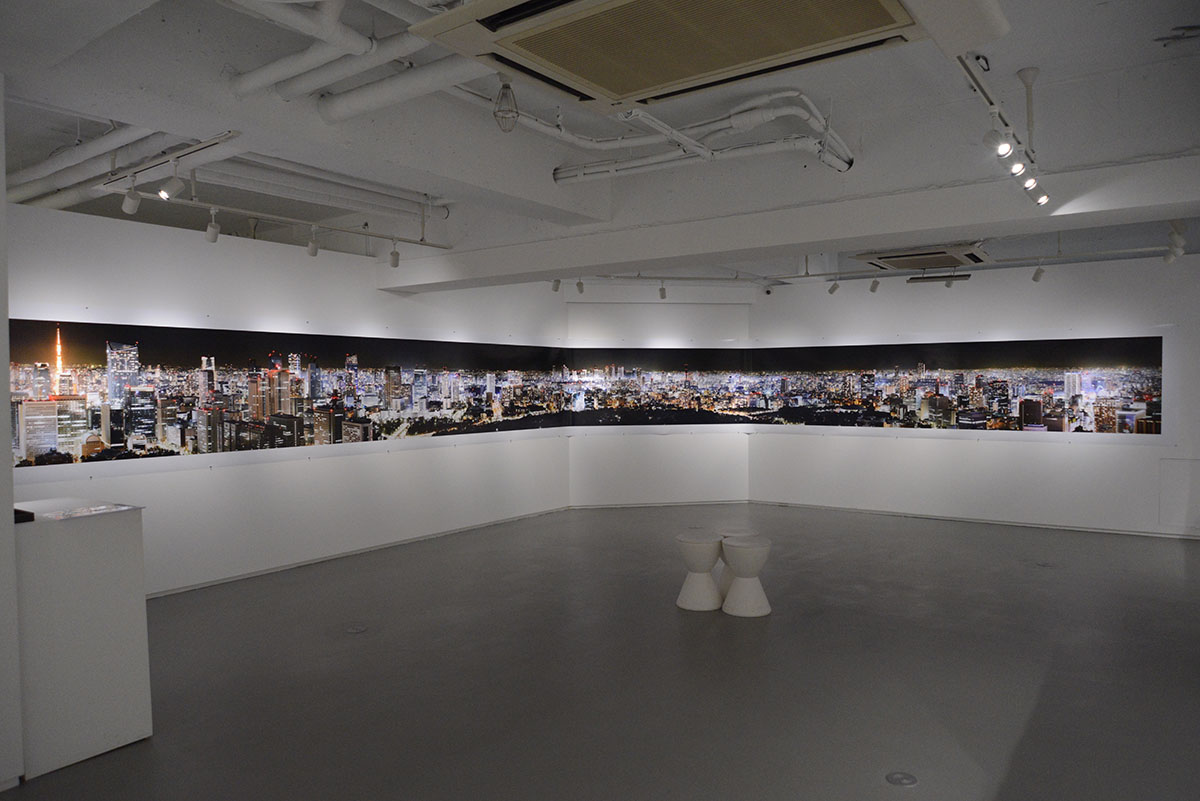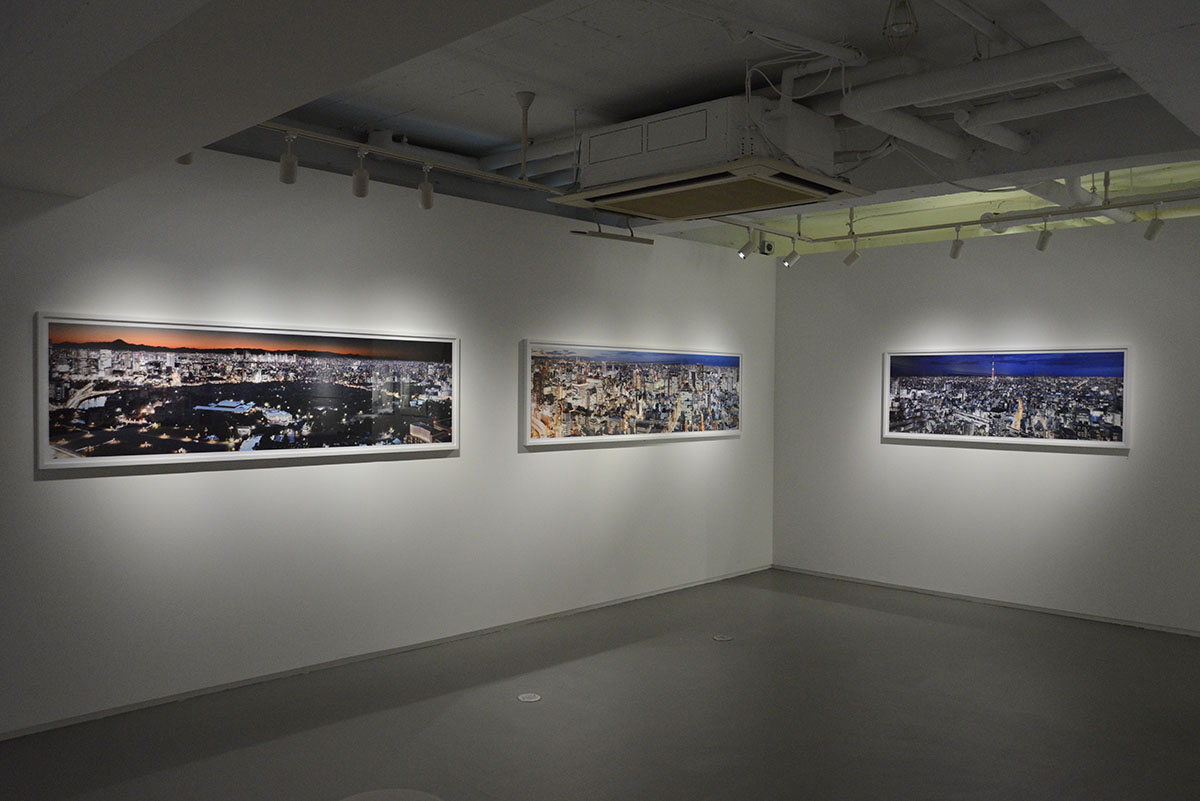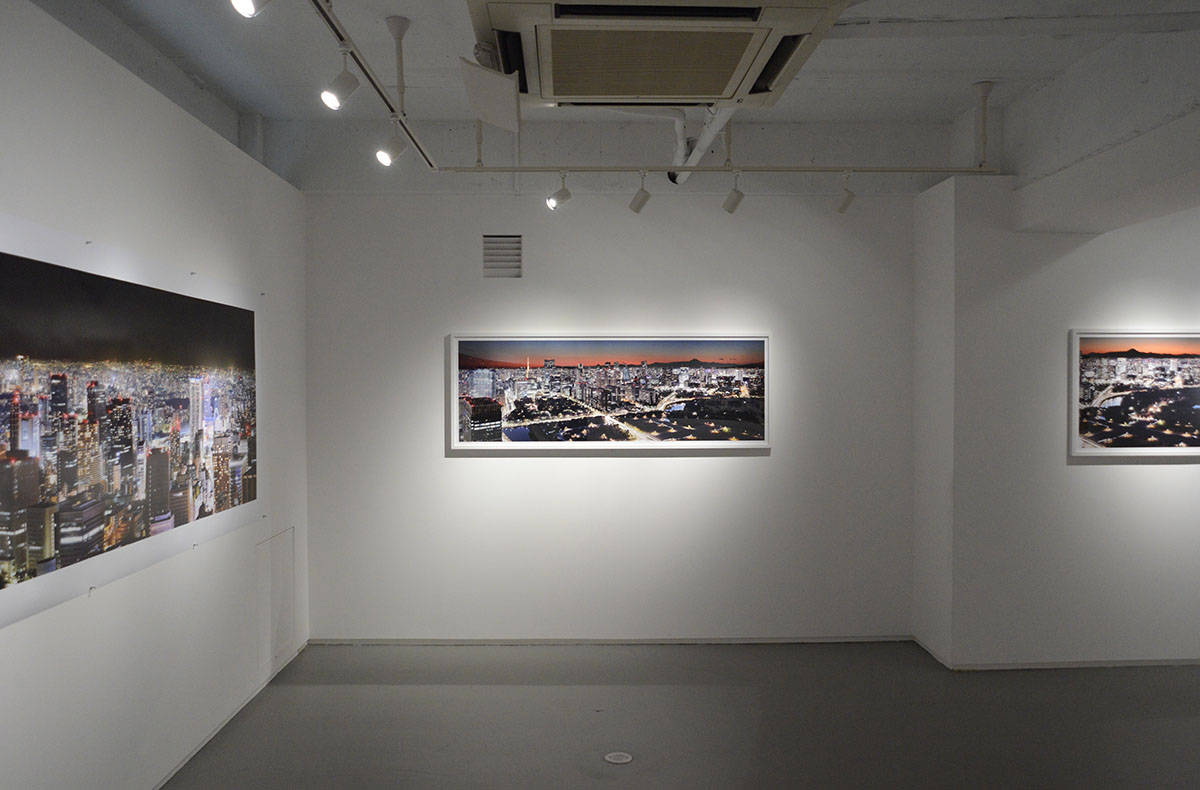SATO Shintaro
The Origin of Tokyo
Feb 27 - Apr 13, 2019
PGI
-

-

-

-

-

©SATO Shintaro
-

©SATO Shintaro
PGI is pleased to present The Origin of Tokyo by SATO Shintaro. This is the artist’s fourth exhibition with the gallery.
For the last 20 years Sato Shintaro has chronicled Tokyo’s ever-evolving landscape. His first work, Night Lights, looked at various entertainment districts throughout the city. He then took to shooting solely from emergency staircases to create Tokyo Twilight Zone and followed with Risen in the East, a project concerned with the changes surrounding the construction of Tokyo Skytree. His photographs transcend mere documentary to reveal the very soul of the city, where history, humanity and terrain intersect.
Tokyo is undergoing a major wave of change in preparation for the 2020 Olympic Games. Rather than focus on these changes, Sato has chosen to photograph one of the only locations not to be affected – the Imperial Palace. Tokugawa Ieyasu, the Shogun who moved the nation’s capital to Edo, employed Chinese geomancy when designing the palace and planning the city. Sato found the difference between the virtually alien ways of the past and the current goings-on of modern Tokyo to be both perplexing and fascinating. All photographs in this series were made on clear winter nights during the so-called ‘blue hour.’ The contrast between the bright city lights, the dim tree-lined palace and the distant Mt. Fuji reveal that not all nature has been swallowed up by the city.
This exhibition will feature 5 archival pigment prints.
My work up to this point has mainly featured eastern Tokyo, yet for my latest project I’ve switched focus to the city’s center. Including such central locations as the Imperial Palace (formerly the site of Edo Castle) adds a historical layer to the previous series, Tokyo Twilight Zone, which had focused primarily on the eastern part of Tokyo where I was born and raised. In the title, The Origin of Tokyo, the word “origin” refers to both the geographical place where Edo Castle was built (when present-day Tokyo was still called Edo), and to the geological features of the land that the city was established upon. Geological properties influence the way people design cities, and the combination of human activities, the history of the land itself, and the history of the city that grows upon it, eventually generates that city’s distinctive atmosphere – its “soul” so to speak. An “origin” is an underlying quality that greatly influences human behavior.
In modern cities that continuously and drastically change on a superficial level, there are few places that have managed to retain their original features quite as much as the location of the Imperial Palace has done. Situated at the edge of the Musashino Plateau (formerly a coastal area at the time of the sea level rise during the Jomon period, about 6,000 years ago), Edo Castle faced the sea when Tokugawa Ieyasu built the city of Edo. The location is thus a boundary in the true sense of the word, and this boundary is exactly where the city of Tokyo emerged from. Against the backdrop of a frightening evolution – from the vast wasteland framed by Mt. Fuji and the surrounding mountains over the great flux of time, to the modern-day Musashino Plateau with all of its high-rise buildings – the Imperial Palace seems to be running counter to that evolution as it retains the land’s original geological features whilst retreating backwards into the forest. Tokyo is a city that lives and breathes this complicated flow of time.
Back when Edo was conceived and the castle was built, the priest Tenkai – in his function as Tokugawa Ieyasu’s advisor – set up a religious protective barrier from the kimon (northeastern point) to the urakimon (southwestern point) of the castle. Today, the unscientific idea of kimon and urakimon may seem rather unrealistic to us, but it’s a story that is connected to the place’s history and to its geological and natural properties, and can even be said to have informed Tokyo’s contemporary city planning and is thus an integral part of the foundation of Tokyo. The fact that Tokyo Sky Tree was erected in the kimon direction northeast of the Imperial Palace, while Tokyo Tower was built upon a spiritual area of land which lies approximately in the urakimon direction of the palace, can perhaps be attributed to such local geological and historical factors.
The emergency staircases and rooftops from which these photographs were taken are boundaries as well. They are places somewhere between the ordinary and the extraordinary; places between heaven and earth that harbor the danger of slipping from this life into the afterlife by taking just a few steps forward. When looking down on the city at the boundary between day and night, from an intermediate elevation much lower than that of aerial or satellite photography, one can grasp the expansion of the city as a whole, whilst simultaneously recognize all of the little details and traces of human activity. Emerging from all of this is a surge of dynamic energy that defines the very soul of this particular place – the origin of Tokyo.
SATO Shintaro
【New Book】
SATO Shintaro “The Origin of Tokyo”
Published by Seigensha Art Publishing, Inc.
Born in Tokyo in 1969. He graduated from the Tokyo College of Photography in 1992. He joined Kyodo News as a staff photographer after graduating from Waseda University, School of Letters, Arts and Sciences, in 1995, and has worked as a freelance photographer since 2002. His work is themed around the distinctive atmosphere – or the “soul” – of Tokyo that is generated from the city’s history and the relief and character of the land itself.
SATO received the Newcomer’s Award from the Photographic Society of Japan in 2009, and the Tadahiko Hayashi Award in 2012. His works have been shown in exhibitions in Japan and abroad, including Night Lights (P.G.I., 2014), The Spirit of the Place (Canon Gallery S, 2014), Tokyo Tokyo and TOKYO – Contemporary Japanese Photography vol.13 (Tokyo Photographic Art Museum, 2016). His photography books, Night Lights (2014), Risen in the East (2011) and Tokyo Twilight Zone (2008) have been published with Seigensha Art Publishing, Inc.
PGI Exhibitions
| Nov 7 | - | Dec 20, 2014 | Night Lights |
| Jan 13 | - | Feb 25, 2012 | Risen in the East |
| May 9 | - | Jun 6, 2008 | Tokyo Twilight Zone |